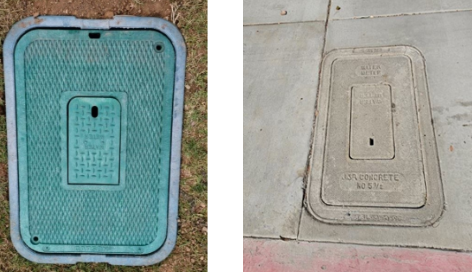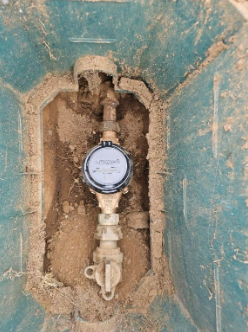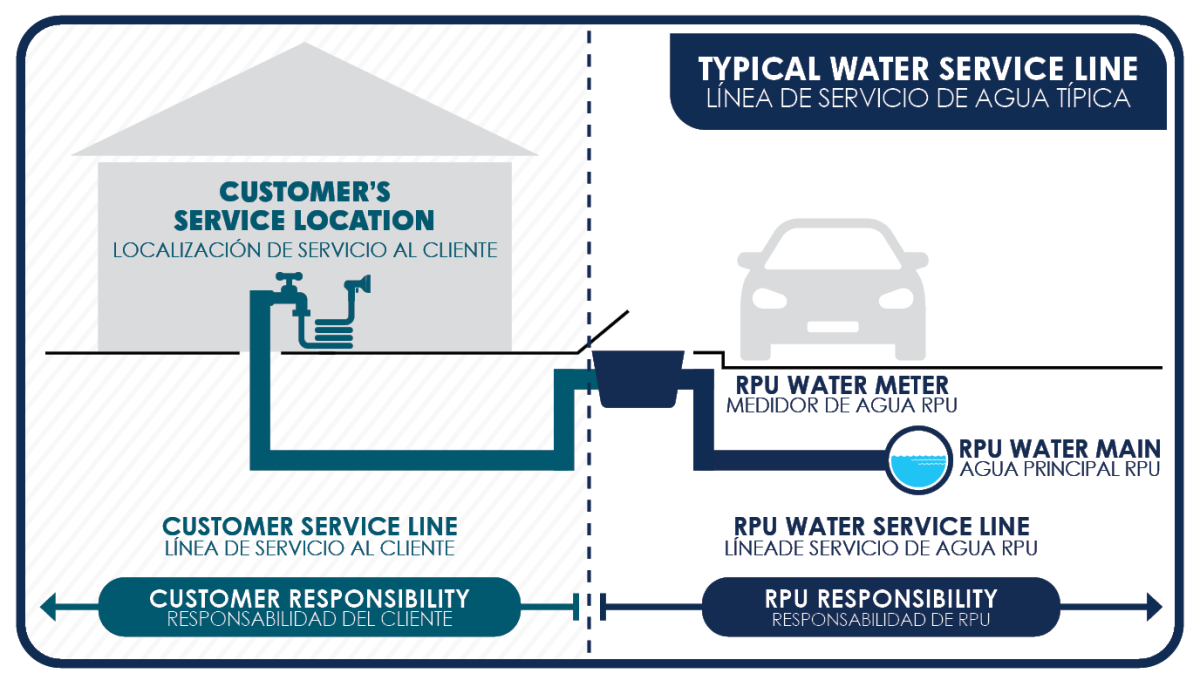The City of Riverside Public Utilities Department is committed to the highest quality water at the lowest possible rates to benefit the community. Eliminating the risk of lead getting into drinking water is a shared responsibility between Riverside Public Utilities and you.
Riverside Public Utilities’ drinking water does NOT contain lead when it leaves our treatment plants. The risk for lead entering the drinking water comes from pipes and plumbing material or within your home or business property.
The new EPA Lead and Copper Rule Revisions (LCRR) requires all community water systems to conduct an inventory of service lines connected to the water system’s distribution system to determine areas most impacted by lead contamination hazards. To meet regulation requirements, Riverside Public Utilities will classify materials used in water supply pipes on the private-side portion of the water service line as non-lead, lead, or galvanized requiring replacement, based on a process approved by the State Water Resources Control Board.
Due to the approved methods by The Division of Drinking Water (DDW), we will not need information from every customer. We will reach out directly to those where information is requested.
CUSTOMERS MIGHT HAVE A PRIVATE LEAD LINE
RPU completed inventory per regulations and found no lead. While Riverside Public Utilities has no known lead service lines, older homes (those typically built before 1986) may have a privately-owned lead line. These privately-owned service lines consist of the portion of the service line running from the back of the Riverside Public Utilities’ water meter to the customer’s home or business. This portion of the water line resides within the customer’s property and is the customer’s responsibility to maintain.
SERVICE LINE MATERIAL INVENTORY MAP
Service line material will be updated on the public-facing map as lines are inspected, worked on, or replaced. It is the customer’s responsibility to notify Riverside Public Utilities if their service line is replaced.
VIEW MAPFAQ
See below for answers to frequently asked questions.
We test our distribution system to meet standards. If you would like to test the water in your home, you can purchase a testing kit from a certified lab. You can find one in your area by calling the Safe Drinking Water Hotline at 800-426-4791 or visiting www.epa.gov/safewater/labs.
- 1.) Remove the lid from your water meter box which is located near the street/sidewalk and look at the pipe going toward your house/business.


- 2.) Locate where your water service line enters your home, often near the hose bib (a faucet on the outside of your home that taps into the main water line) connecting to your house or in the garage.

- 3.) Determine material for your service line in both locations. Materials needed are a penny and a strong magnet. Copper – If you scratch the water service line with a penny and the material is copper in color, similar to a penny, you have a copper pipe.

Galvanized Steel – If you scratch the water service line with a penny and the material is not easily scratchable and the color is dull gray, see if a magnet will stick to it. If the magnet sticks, it is galvanized steel.

Plastic – A plastic pipe can be various colors like white, black, blue, green, etc. and will remain the same color if scratched. A magnet will not stick to a plastic pipe.

Lead – If the pipe is easily scratchable and the scratched surface is shiny and silver, see if a magnet will stick. A magnet will not stick to a lead pipe.

If you have a service line made of lead, contact a licensed plumber to replace your portion of the water service line. In order to reduce lead exposure, be sure to use a certified water filter that reduces lead and continue using it for six months following the lead service line replacement. EPA: Use Certified Water Filters to Reduce Lead
It is the customer’s responsibility to pay for the replacement of the service line material on the customer side of the water meter.
For questions, please contact 311 Call Center at (951) 826-5311 or email CallCenter@RiversideCA.gov.

